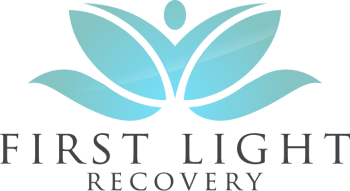ADHD, also known as attention deficit hyperactivity disorder, is defined by the National
Alliance on Mental Illness (NAMI) as a condition characterized by inattention, hyperactivity,
and impulsivity. Various aspects of life that can be treated are increased attention in school,
work, and overall, the goal to live a productive life.
Most commonly, ADHD is diagnosed in children and adolescents. But ADHD does not only
affect that targeted population of individuals. NAMI shares that “an estimated 8.8% of children
aged 4-17 have ADHD” and “an estimated 4.4% of adults aged 18-44 have ADHD.”
Symptoms of ADHD
Different symptoms can arise in a person who is diagnosed with ADHD. Due to symptoms
presenting as non-threatening or of concern, individuals can still experience trouble and distress
and will increase their behaviors for longer than six months. Three main categories summarize
the varying symptoms present in children, adolescents, and adults: inattention, hyperactivity, and impulsivity.
Signs of inattention include:
– Fails to pay close attention to details; makes careless mistakes
– Distractible; difficulties with sustained attention; easily bored
– Attentional drift; appears not to listen; difficulty refocusing
– Does not follow through and fails to finish tasks
– Disorganized, messy work; lost things; poor time management
– Reluctant to do tasks that require sustained attention
– Lose materials required for tasks and life (ex. Books, wallet, keys)
– Extraneous stimuli distracting
– Forgets daily activities
Signs of hyperactivity include:
– Non-stop talking
– Difficulty doing quiet tasks or activities
– Fidgeting and squirming, having trouble sitting still
– Touching or playing with everything
Signs of impulsivity include:
– Interrupting others
– Impatience
– Difficulty taking turns, waiting, or sharing
– Acting without regard for consequences, blurting things out
Causes and Diagnosis of ADHD
Two main factors can contribute to the diagnosis of ADHD in people. Genetics is the first that
research has found with brain areas connected to attention. ADHD is a polygenetically
predisposing disorder that is phenotypically complex.
The smaller right prefrontal cortex, pallidum, and abnormal asymmetry of frontal lobes are affected. Exposure to environmental toxins such as pesticides or lead can also influence the individual. Other environmental factors can include malnutrition, poverty, shortened or delayed labor, fetal distress, alcohol, tobacco, neglect, and severe deprivation.
Diagnosing ADHD in someone usually happens during childhood due to typical behavior
occurring most commonly at that age but is not limited to only children. The presence of six or
more inattentive and/or hyperactive-impulsive symptoms that are inconsistent with development
for at least six months need to be met.
Clinically, the present symptoms need to be from at least two settings and cause impairment in social, academic, or work function in the person’s life. No single test can diagnose an individual with ADHD, so meeting with a medical or mental health professional is necessary to gather further information.
Treatment for ADHD
Treating ADHD can combine different interventions and symptoms management skills best
supported by a mental health professional and medical provider.
For symptom management:
– Medication evaluation, coordinate care with your physician
– Education about illness; review medication adherence compliance
– Multimodal approach; identify evidence-based intervention
– Address social skill deficits; interpersonal, education, and occupational challenges
For therapeutic interventions:
– Establish a firm therapeutic alliance between client and clinician
– Assess and monitor impulsive high-risk behaviors
– Support commitment to treatment
– Assess and treat comorbid learning, mood, and substance-related disorders
For adjunctive interventions:
– Facilitate individualized support and strategies
– Referrals for a family to groups for education about ADHD and support
– Organization of academic accommodations and organization tools
– Encouragement of self-esteem enhancing activities, sports, or social activities
A multimodal approach includes medication, psychological therapy, educational interventions,
strategic tutoring, and social skills training. Combined treatment using behavioral management
and stimulant medication is the gold standard for treating ADHD in individuals.
What is Emotional Dysregulation?
Psychology Today defines emotional dysregulation as a complex collection of processes that are thought to include four main aspects:
– A lack of awareness, understanding, and acceptance of emotions
– A lack of adaptive strategies for regulating emotions (the intensity and/or duration)
– An unwillingness to experience emotional distress while pursuing desired goals
– An inability to engage in goal-directed behaviors when experiencing distress
A spectrum exists for a wide range of individuals who can work towards regulating their
emotions. People don’t fall into either having feelings solely regulated or dysregulated. When a
person exhibits an imbalance that sways more towards dysregulation is when a mental health
disorder may be diagnosed.
Tips for Healthier Emotion Regulation
Everyone can benefit from learning and sharpening their emotion regulation skills by engaging
in the following:
– Exercise: Various forms of activity such as running, cycling, walking, or swimming are
just a few options that can contribute to increasing emotion regulation.
– Deep Breathing: When anxious, a person’s breath can become shallow and quicker.
Engaging in deep breathing exercises deliberately slows down the breath and heart rate.
– Yoga: Yoga as an activity can be used to combine both physical activities with
mindfulness.
– Radical Acceptance: Individuals can learn to stop fighting reality or responding to
situations with impulsive and destructive behaviors and work towards distress tolerance
and management.




